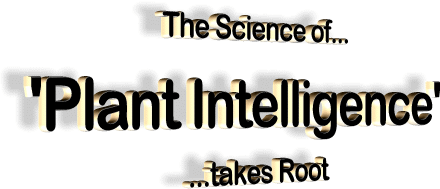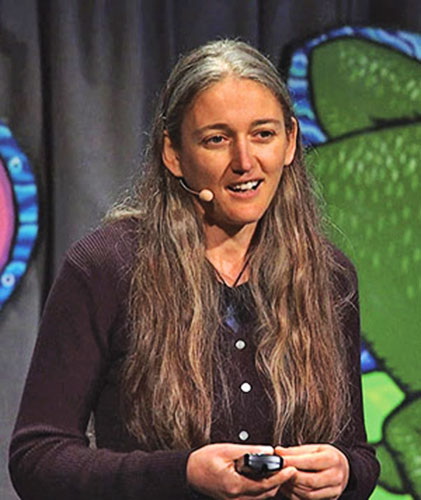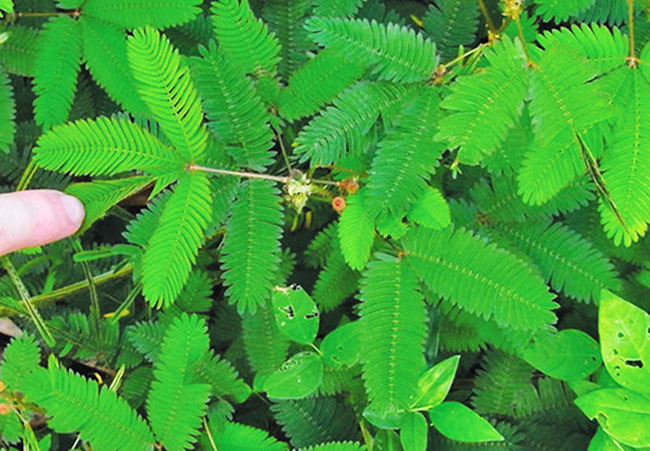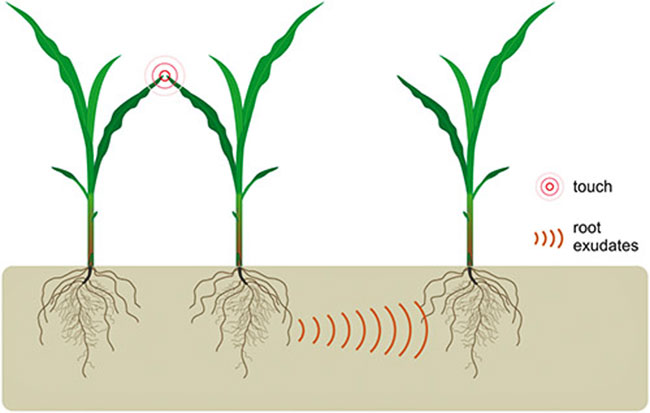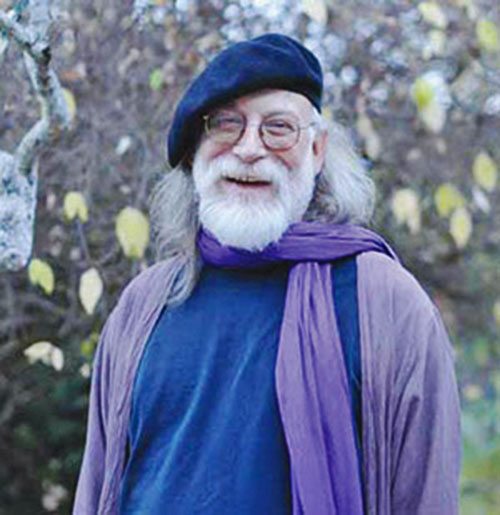|
Sept-Oct 2019
Resurrection of Gaia by billelis
The famous 17th
scientist and philosopher, Rene Descartes, maintained
that non-human organisms cannot reason or feel pain; they are
robotic machines that purely act on impulse. 1
It is assumed that
because plants do not possess a brain, they have no conscious
experience.
While the scientific
community explains the intelligence of plant behavior in terms of
electrical and chemical responses to sensory stimuli, others believe
that plants could provide a valuable insight into other forms of
consciousness.
While Darwin is most prominently known for the theory of evolution, he was deeply fascinated by the behavior of plants and made a valuable contribution to the botanical sciences.
Unlike many of his contemporaries, Darwin maintained that plants are not unthinking automatons but highly complex and receptive organisms.
In one of his last works, The Power of Movement in Plants, published in 1880, Darwin suggests that the root of the plant operates in a similar way to the neural networks found in lower animals, receiving information about the external environment and communicating it to other areas of its structure, writing:
Unfortunately, Darwin's observations were rejected by leading scientists of the time, particularly the eminent plant physiologist Julius Sachs.
He labeled Darwin an amateur scientist who performed careless experiments and acquired misleading results.
However, in-depth analysis of plants is beginning to reveal they possess highly developed neural systems and even utilize the same neurotransmitters we do.
In 2009, researchers
Dieter Volkmann, Stefano Mancuso, Peter W Barlow
and Frantisek Baluska, published an article in the journal
Plant Signal Behaviour entitled "The
'root-brain' hypothesis of Charles and Francis Darwin" in
which they examined Darwin's root hypothesis and whether current
scientific literature supports his theory.
According to the paper, plants can recognize self from non-self and roots, even secrete signaling exudates that "mediate kin recognition."
Moreover, plants are,
Darwin's theories were ridiculed at the time he was writing, but now more open-minded scientists are discovering that plants may possess some form of conscious awareness, a discovery that would have pleased Darwin immensely.
Monica Gagliano delivered a keynote speech on Plant Intelligence and the Importance of Imagination in Science at the 2018 National Bioneers Conference in San Rafael, CA, USA.
In 2014, she conducted a series of experiments using Mimosa Pudicas plants to work out whether plants 'memorize' changes in their environment.
Since the plants were not harmed in any way, Gagliano wondered whether they would eventually realize the drop did not signify an external danger.
After a short amount of time, she found that,
The plants realized that
falling from six inches would not cause them any harm and no longer
curled their leaves.
She found that the plants
still curled their leaves, indicating they only became unguarded
when dropped from a height to which they had become accustomed.
5
Mimosa pudica is known as the 'sensitive plant', and appears to be able to learn from experience.
Image credit: Flickr/foam, CC BY-SA
The fact that they respond differently to situations that present no harm to those that do, implies plants recall sensory information and 'memorize' changes around them.
While there is much
uncertainty as to how plants recall this information, Gagliano
believes it could be representative of a distributed intelligence
operating entirely different to the mammalian brain.
We should imagine the brain to be like a television set which tunes into different programs we watch, rather than a memory hard-drive. From this perspective, the brain has limited memory.
Most of the information is stored somewhere else in some sort of 'quantum database'.
As Sheldrake points out, it has been proven that animals have memories that are engendered in other members of their species, and past experience is passed onto future generations.
For example,
Examples like this suggest memory may not be an entirely neurological phenomenon but exists in other forms.
This may explain why
plants are able to memorize information without possessing a
physical brain structure. 6
In a study conducted by Dr. Velemir Ninkovic and his associate researchers at the Swedish University of Agricultural Sciences, a soft brush was applied to corn seedlings, a stimulus that could represent different external stresses, such as new plants encroaching on their territory or an animal trying to eat it.
New seedlings were then placed in the same soil as the recently touched plants to see whether it impacted their growth.
The scientists discovered that the fresh seedlings responded by growing more leaves and fewer roots than the plants that had grown under unmodified conditions.
This suggested that the corn seedlings were exposed to the chemical signals of the recently touched plants in the soil and therefore were preparing themselves against future stresses more effectively. 7
between neighboring corn seedlings by light touch and their effect on below-ground communication. Image credit:
Aboveground mechanical stimuli affect
belowground plant-plant communication
When placed near both types of soil, the roots had a preference towards the growing solution that contained the untouched plants.
These findings suggest that plants are able to communicate with each other even when they are not simultaneously present. This challenges the view that plants cannot exchange information in the way animals do and utilize complex communication networks to protect the interests of the group species.
While science has
historically depicted plants as inanimate and mechanical, in reality
plants possess a profound 'social' intelligence that supports the
continuation of their survival.
Plant Sentience in
Shamanic Cultures
As Michael Winkelman, Associate Professor at Arizona State University states,
Religious ceremonies, practiced for hundreds of years in these cultures, often involve the consumption of entheogenic plants to access alternative realities and altered states of consciousness.
During these ceremonies, the shaman assumes the role of a spiritual guide to direct the experience through chanting, drumming, singing and other psycho-dramatic practices.
The plants are believed
to hold sacred properties, with the potential to provide the
participant with profound insights.
Many also say the
experience had a long-lasting impact on their connection with
animals, people and nature, helping them solve their existential
issues more effectively. 8
By observing their behavior,
Although modern science provided us with tremendous technological innovation and development, the reductionist belief that animals and plants are 'mechanical' in their nature, rather than a dynamic expression of intelligence and consciousness, has disconnected us from our environment and thus ourselves.
As the independent scholar, author, teacher, and speaker on sacred plant medicine, Stephen Harrod Buhner, states:
It challenges the anthropocentric and monotheistic view that humans are the only species with a mind and a soul - we are not the most important entity in the universe but part of an interconnected web of life.
There is great value in recognizing nature's extraordinary intelligence as we find ourselves on the brink of social, economic and environmental collapse.
For decades, the capitalist economic model has depended on resources provided by non-human life forms in order to meet the needs of consumers.
Perceiving plants as sentient life forms, rather than a mere resource for our consumerist habits, may prompt us to formulate new ways of living in harmony with the natural world.
By expanding our view of how consciousness expresses, we can better appreciate the complexity of the ecological world and possibly halt the current path of environmental destruction.
Buhner notes:
Plant intelligence also forces us to reconsider the nature of consciousness.
In this reductionist perspective, plants and animals possess a very limited consciousness since their brains are not as neurologically complex.
But the fact of the matter stands that modern science does not understand the mystery of consciousness and the process by which neural pathways, which are non-conscious, become self-aware as a complex web of connections in the brain.
If plants have the ability to recall sensory information, socially communicate with each other, and respond to complex changes in the environment, we are forced to rethink our current models of consciousness.
It may be the case that
the human brain constitutes a very
specific expression of consciousness, and intelligence manifests
across a broad spectrum of life with plants possessing
their own unique form of awareness
which modern science does not currently understand.
Recent scientific experiments indicate that plants are able to retain sensory information, respond to complex changes in their environment and even communicate with one another via complex biological networks.
While we have yet to
fully understand how plant intelligence works, these experiments
challenge the orthodox scientific view that plants are
non-sentient, and intelligence only emerges via neural pathways in
the brain.
As we teeter on the
brink of environmental collapse, and traditional social,
economic and political models become increasingly redundant and
outmoded, it is critical we start perceiving nature and plants in a
different light, rather than a depletable, capitalist resource...
|

